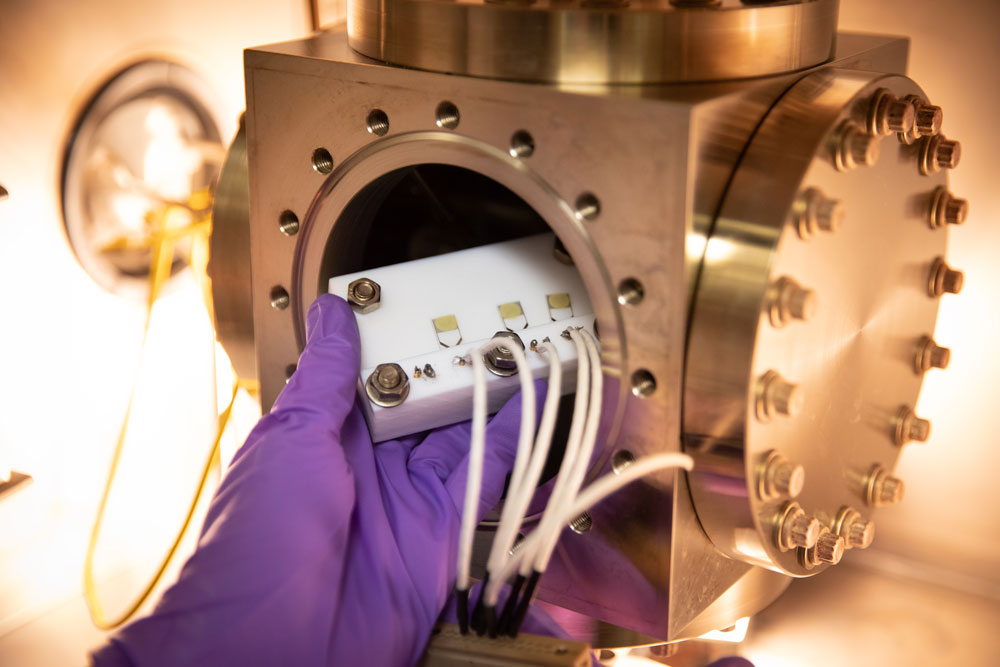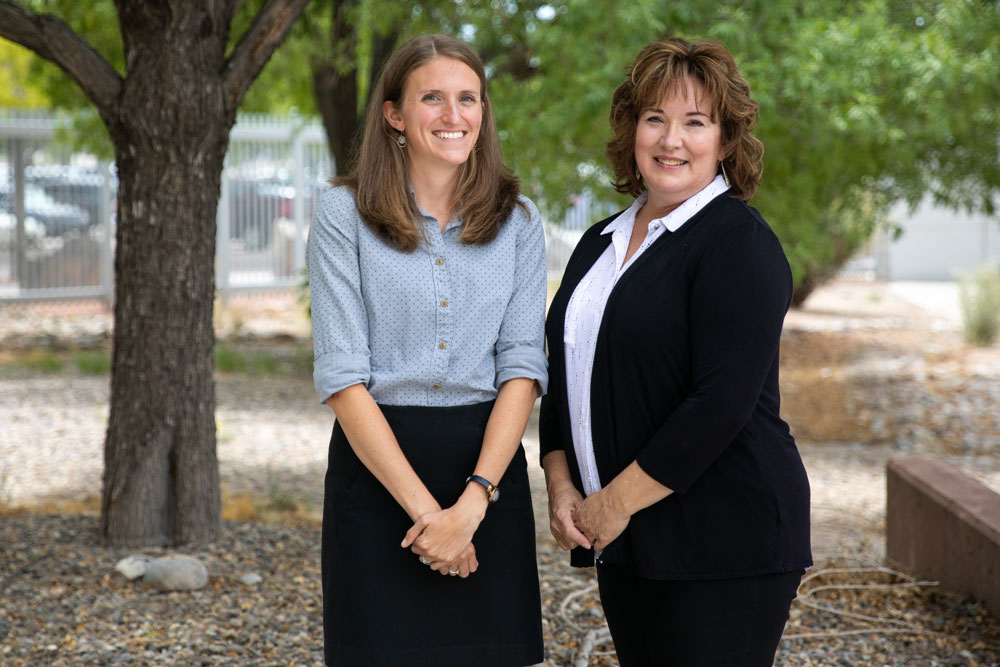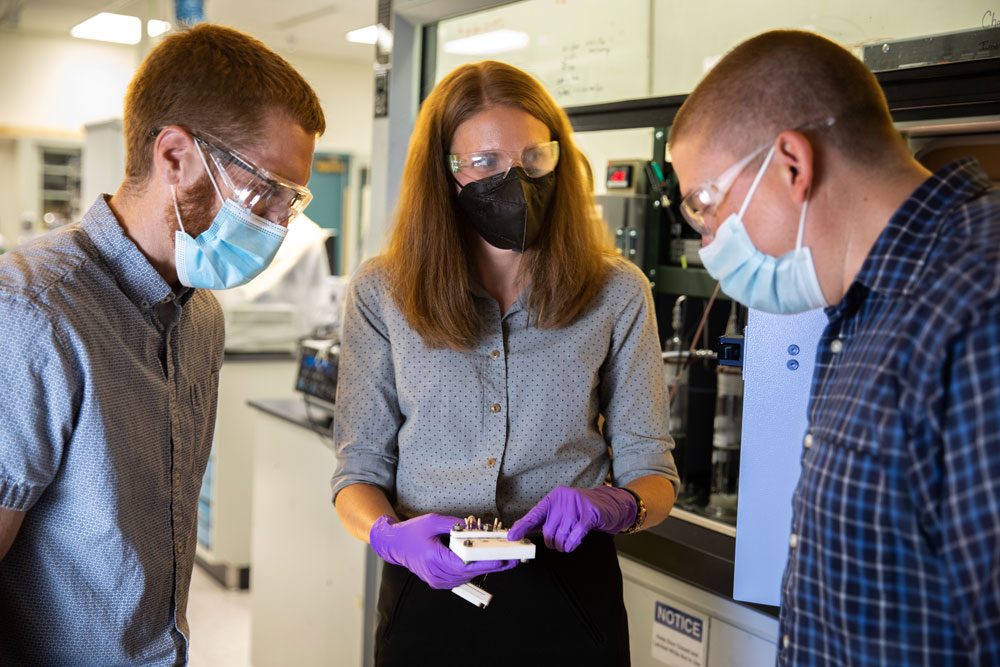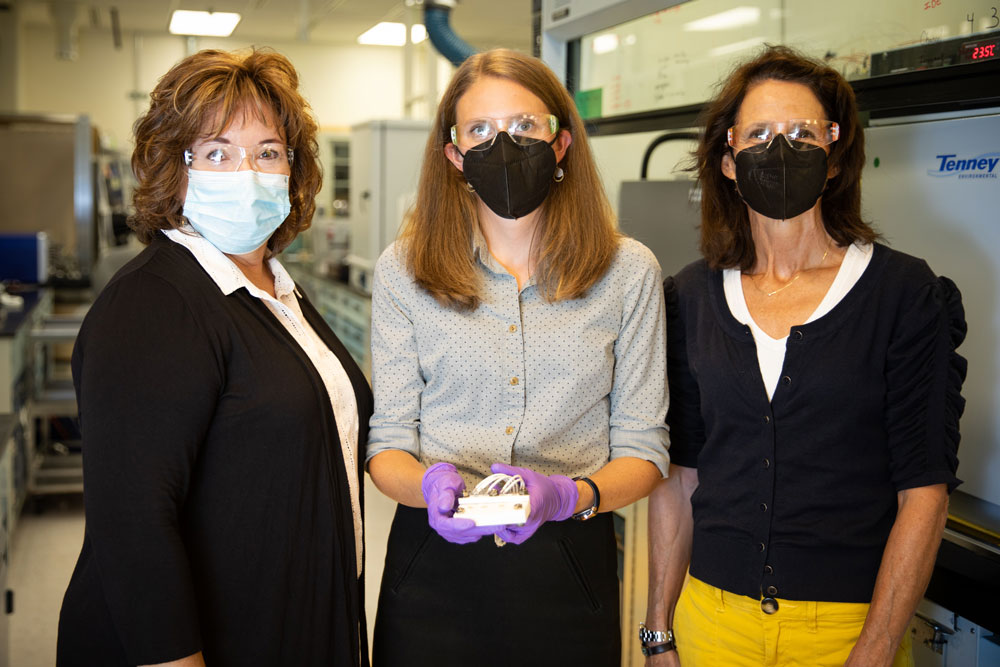Winners will use funds to improve sensor technology

A Sandia team working on commercializing a sensor to help munitions remain safe and reliable won $25,000 from the DOE Energy I-Corps program. The money will help the team further develop the technology.
Energy I-Corps is a key initiative of the DOE’s Office of Technology Transitions, which sends teams through an intensive two-month training where researchers define technology value propositions, conduct stakeholder discovery interviews and develop viable market pathways for technologies.
The winning Sandia team was part of the 14th cohort to graduate from Energy I-Corps which took place virtually this year. Sixteen teams from nine national laboratories participated, including four teams from Sandia. The winning team included principal investigator Mara Schindelholz, business management professional Wendy Rue and industry mentor Rob DelCampo from the University of New Mexico.

“Being able to dig in and learn about the problem space and the type of environment that our sensor would need to function in has helped us in terms of structuring our upcoming relevant environment testing that we’re going to perform on the sensor,” Mara said.
The sensor, nicknamed nDETECT for the Energy I-Corps program, could be used by the military for monitoring degradation of nitrocellulose and nitroglycerine-based propellants, which are used by the Army as the energetic material that provides the propulsive force in their munitions, such as rocket motors.
“This type of propellant is known to degrade with time, especially when exposed to extreme environmental conditions and will begin to emit nitrogen oxides. Our sensor would give the military an indication that the propellant, or by extension the weapon, is degrading,” Mara said.
The sensors would be mounted near the weapons. Current commercial options for nitrogen oxide detection can require higher temperatures to collect a measurement or operate at room temperature but are easily fouled. The Sandia-developed sensors are composed of an interdigitated electrode with a nanoporous adsorbent layer. The nanoporous material can be tuned to selectively adsorb gases, and the electrical response directly correlates to gas concentration.
“Current chemical sensor technologies are expensive, have a short lifespan and can require extensive maintenance,” Mara said. “Our chemically selective nanoporous-based electrical sensors are cost-effective and low power. They use 1 millionth the power consumption of current chemical sensors and require minimal maintenance.”
Mara said data from the sensors will better inform safety decisions regarding weapons and help identify trends in evolution and absorption of off-gassing products to improve estimates of remaining useful life and degradation performance.

The Sandia team, which includes Sandia co-principal investigators Tina Nenoff and Leo Small, plans to continue to advance the technology through development of future prototypes with their partners at the Kansas City National Security Campus. They plan to produce a prototype sensor and continue discussions with businesses interested in licensing the technology with money won from Energy I-Corps.
Mara and Wendy said outside of interest from government and military partners, they envision the sensor could be of interest to the private sector. For example, auto, coal, air quality and environmental monitoring industries need sensors to effectively – and ideally efficiently – detect gasses, too.
On path to commercialization
Mara and Wendy spent the first week of Energy I-Corps in information sessions, then met once a week with the entire cohort and once a week with instructors.
As part of the Energy I-Corps program, Mara and Wendy conducted 75 customer discovery interviews over eight weeks.

“We are very proud that the most recent Energy I-Corps session winners are from Sandia,” said Mary Monson, senior manager of Technology Partnerships and Business Development at Sandia. “The program is a huge commitment, and all teams work hard to learn about commercializing technology. Learning the value of technology transfer can change the trajectory of a researcher’s career and help inspire goals that could benefit government entities, industry and the public.”
Prior to Energy I-Corp, Mara and Wendy hadn’t met and they instantly clicked. Coming from the technology partnerships side of Sandia, Wendy said she enjoyed learning more about the work of a principal investigator.
“Our researchers develop amazing technologies but many of them don’t know how to get their idea out of the laboratory,” Wendy said. “Energy I-Corps explored that entire path of commercialization, and that’s valuable training for anybody who wants to learn how they can get their technology out there in the world.”
Mara said she picked up business skills that will help throughout her career.
“The program helped me professionally and personally,” she said. “I now feel like I can speak the language of tech transfer and commercialization.”